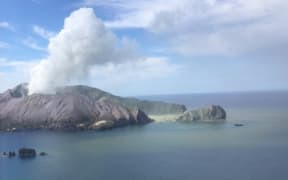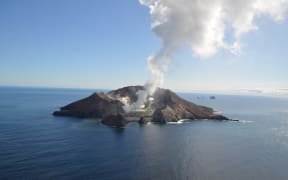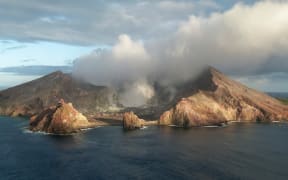By Emily Clark for the ABC

American Matthew Urey in the witness box at the Whakaari White Island eruption trial. Photo: NZ Herald / Jason Oxenham
As the criminal trial over the deadly Whakaari White Island disaster continues, one emerging line of inquiry is whether there was an understanding of how PPE could protect visitors to the volcano in the event of an eruption.
The trial has heard evidence from five survivors - four tourists and one helicopter pilot.
In both the police interviews that have been played to the court and the questioning happening in the room, the survivors have been asked about what they wore that day and the burns they sustained.
Australian survivor Annie Lu talked about the activewear she was wearing while on Whakaari and the feeling of it burning on her body.
Lu said she was wearing leggings, a sports bra, a cotton mesh T-shirt and a cropped hoodie.
The White Island trial heard that after the eruption, Lu made it to the wharf on Whakaari and realised she needed to cool her body down.
"I just dumped my backpack on the floor, took off my jacket … and then I was like to Mum, 'I'm going to try and get down the ladder to cool off my leggings because they're not cotton and I can feel them burning,'" she said.
"So I walked three rungs down into the water and soaked."
In a police interview with Lu played to the court she said she remembered thinking the leggings were melting.
"Leggings don't usually come in cotton. And anything that's not cotton, that's made of either polyester or nylon will melt," she said.
"And so I was like, OK well I've got melted plastic … so I was like the only way to cool this off and make it less painful and hot for myself would be to have something to cool down those leggings ASAP or else it's going to eat more into my flesh."
Lu described the pain as "like 100 needles going into you and the needles have been heated up".
Another survivor, Matthew Urey, told the court he sustained burns to 53 percent of his body.
He was wearing shorts and a T-shirt on the day of the eruption. The court has not heard what fabric his clothing was made from.
"The most severe burns I have are all from midway down my upper arm and midway down my thigh - the exact outline of my clothing," he said.
"I'm not an expert, but in my opinion had I been wearing long sleeves and long pants, the vast majority of my burns would have been far less severe.
"The only other spot I have burns are on the lower portion of my back where my shirt would have ridden up a little bit when I was kneeling for the eruption, but other than that, my covered skin all survived with just superficial burns."
In a police interview, Lauren Urey said she was also wearing full-length exercise leggings and a long-sleeve top.
She told police a stranger rinsed her with water after the eruption and her arms "are actually OK", but she did sustain burns to 23 per cent of her body.
"My hands, my legs. I have burns on my face, but I don't have grafts on my face. I had to get grafting done on my scalp," Urey said.
She said her legs were "really badly burnt".
"I have skin grafts on my legs. I have skin grafts on my stomach, all the way around to my back," Urey said.
She said her exercise tights had a "bell bottom" and the lower part of her legs sustained more serious burns.
Both Urey and Lu said they did not have burns in the areas they were wearing underwear or two layers of clothing.
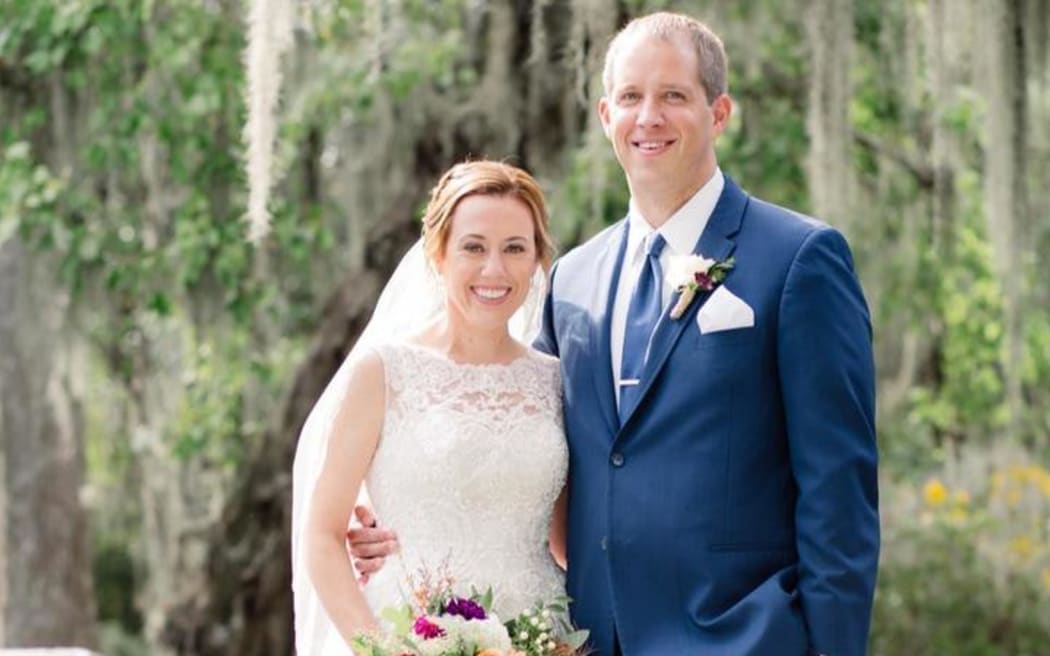
American newly-weds Matthew and Lauren Urey. Photo: Facebook/Lauren Urey
Hard hats, respirator and closed-in shoes
In preparation for their tour of New Zealand's most active volcano, the survivors who have given evidence in the trial said they were told to wear enclosed shoes.
Both Lu and Urey gave evidence that the only safety briefing they received for their visit to Whakaari was once they were already on the island.
They said they were given hard hats and respirator masks at that time.
The court heard the tourists were told to keep the hard hats on at all times and to wear the respirator mask when they felt like they needed it.
Prosecutor Steve Symon questioned Lu on why she decided to wear activewear that day.
"We chose what to wear because of one, the weather, because it was hot," she said.
"And two, basically how they've described it on the pamphlet is, it's a casual walk, as long as you've got enclosed shoes and you're covered, that's all you really need.
"It wasn't like any of the other hiking trips I've ever taken to different volcanoes. Those will tell you you need to be in a fully airtight boot with ... loose cotton clothing. No, this one just that it's a casual walk and that's it."
Lu told the court she and her mother thought: "Oh well, it's an easy walk, I'll just dress how I normally would when I go bushwalking."
The court heard the details of Lu's harrowing journey from Whakaari back to the mainland and the attempts she made to administer her own first aid.
More than three and a half years after the eruption, she told the court about the extent of her burns.
"The sports bra protected me … [but] everything from under my breasts down was burnt," Lu said.
"My whole leg is burnt. The front of both of my legs are all grafted, all my ankles are grafted, up to mid-calf on my right leg is grafted, the whole back of my thigh on my right leg is grafted."
David Neutze, lawyer for defendant ID Tours New Zealand, took several witnesses through brochures for the Whakaari visit, including the "shore excursion guide" from Royal Caribbean.
The pamphlet includes a section titled "what to wear".
"I gather that both you and your husband feel that Royal Caribbean probably should have told you to wear long-sleeve shirts, long pants and that might have made a difference. Would that be fair?" Neutze asked Urey.
"I believe there were entities … that should have warned us about the clothing. I don't think it was just Royal Caribbean that should have told us this," she responded.
There are six defendants in this trial, with six more having already pleaded guilty and one having charges against it dismissed.
Brothers James, Peter and Andrew Buttle - who own White Island - and their company Whakaari Management Limited are on trial, as well as ID Tours New Zealand and Tauranga Tourism Services.
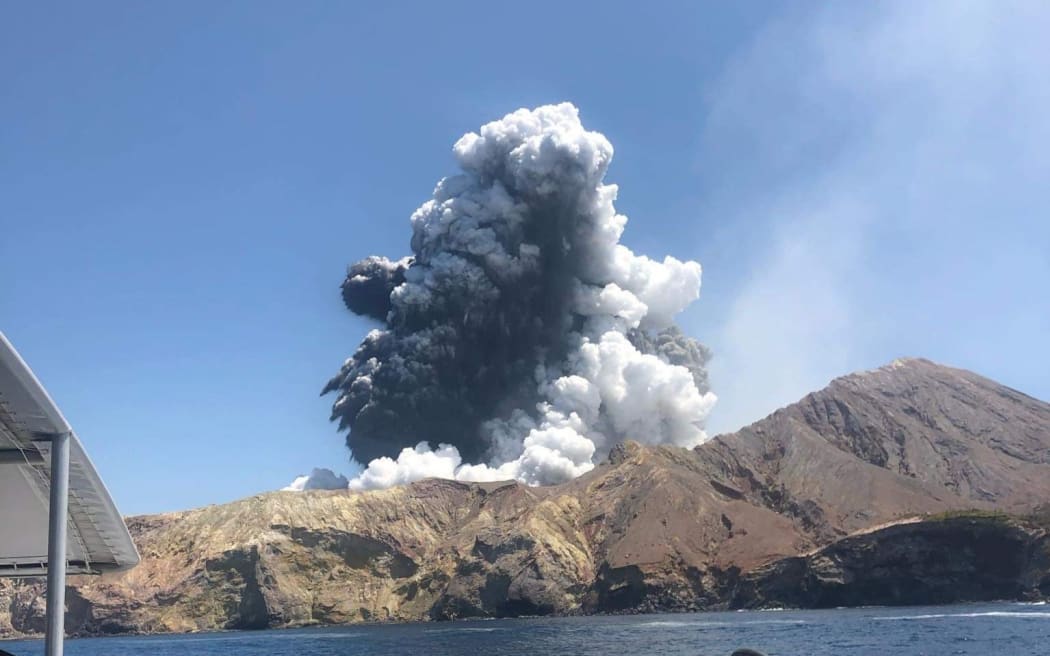
Whakaari White Island eruption as seen from a tourist boat. Photo: Supplied / Lillani Hopkins
Overalls, gaiters standard for scientists
As well as survivors, the trial will hear from a range of technical experts as it progresses.
For the past three days, Gill Jolly, an expert volcanologist from New Zealand's volcano monitor GNS Science, has been questioned by both prosecutors and defence counsel.
One line of questioning has been about how GNS assesses the risk of being on Whakaari and, as part of that, the PPE scientists wear when on the island.
On Friday, defence counsel Neutze addressed the issue of PPE GNS scientists themselves were wearing before the 2019 eruption.
Jolly told the court that prior to 2019, the level of PPE GNS staff wore could vary, but it was standard to wear overalls, to carry a gas mask and to wear gaiters or gumboots to protect their feet.
"Subsequently we've done a lot of work to ensure that the PPE that we will be wearing if we do go back will be significantly higher-grade equipment," she said.
"We've developed a safety management plan to return to the island and that has a lot of detailed information about how we mitigate the risk, the places that we go, and when we may or may not go to those areas."
James Cairney, who represents the Buttle family and Whakaari Management Limited, spent a significant amount of this week interrogating the relationship between GNS Science and his clients, which he said went back several decades.
Cairney drew the court's attention to a document authored by GNS, which read: "The three Buttle brothers all seemed to understand the need for robust risk management protocols to be in place and they undertook to talk to the operators to encourage them to re-think their procedures."
Cairney also made the point the Buttle brothers themselves did not run tours on the island.
This trial is set down for 16 weeks and continues on Monday.
- This story was first published on the ABC.
